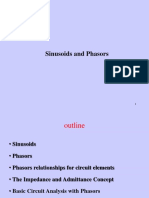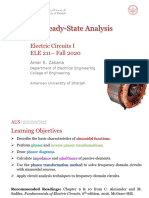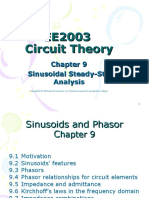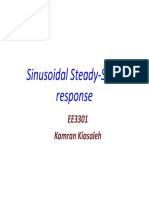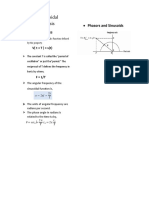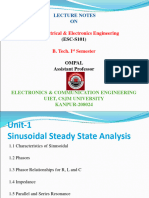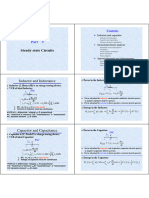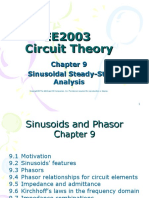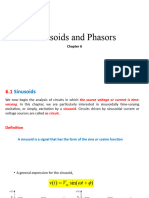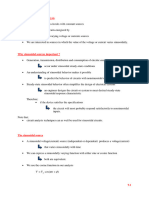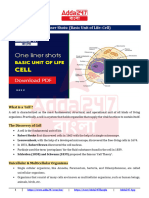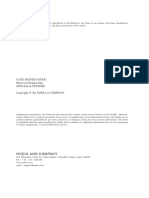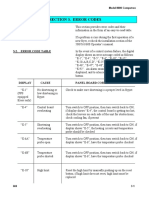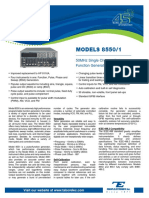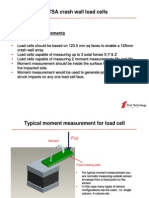0% found this document useful (0 votes)
64 views18 pagesPhasor Relationships for R, L, C
This document discusses phasor relationships for resistors, inductors and capacitors in sinusoidal steady state analysis. It describes the current-voltage relationships for each component in both the time and frequency domains. Equations are provided for impedance, reactance, power, energy and reactive power for inductors and capacitors.
Uploaded by
Katiyar RahulCopyright
© © All Rights Reserved
We take content rights seriously. If you suspect this is your content, claim it here.
Available Formats
Download as PDF, TXT or read online on Scribd
0% found this document useful (0 votes)
64 views18 pagesPhasor Relationships for R, L, C
This document discusses phasor relationships for resistors, inductors and capacitors in sinusoidal steady state analysis. It describes the current-voltage relationships for each component in both the time and frequency domains. Equations are provided for impedance, reactance, power, energy and reactive power for inductors and capacitors.
Uploaded by
Katiyar RahulCopyright
© © All Rights Reserved
We take content rights seriously. If you suspect this is your content, claim it here.
Available Formats
Download as PDF, TXT or read online on Scribd
/ 18















